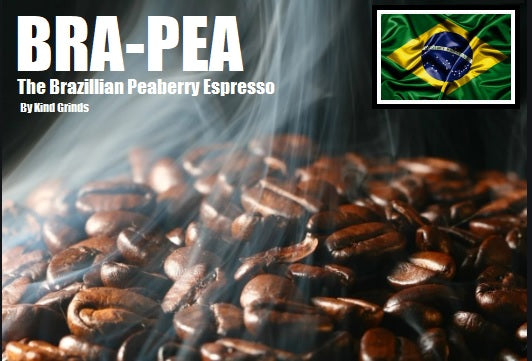Exploring the Abundant Tastes of Coffee Beans: a Deep Dive Into Espresso and Blended Coffee Beans
When you discover the abundant tastes of coffee beans, you reveal a complex world where each variety brings its very own personality to your mug. As you browse via the art of espresso and the imagination behind blended coffees, you'll start to appreciate the nuances that make each sip one-of-a-kind.
The Beginnings of Coffee Beans: Discovering Terroir and Flavor Profiles
When you take a sip of coffee, you're not just delighting in a drink; you're experiencing a rich tapestry of tastes formed by the beans' beginnings. Each area generates special taste profiles influenced by elevation, climate, and dirt. Beans from Ethiopia often break with bright, fruity notes, while those from Colombia often tend to provide a well balanced, nutty sweet taste.
As you explore various beginnings, you'll observe just how terroir-- the environmental variables impacting a plant-- plays an important duty - Single Origin Espresso. The exact same coffee range can taste dramatically different depending on where it's expanded
When you take into consideration these elements, you start to value the intricacy behind your cup. Each sip narrates of the land and the farmers that supported the beans. Next time you delight, think regarding the trip your coffee took before it reached your hands, and appreciate those intricate flavors that show its origin.
Comprehending Coffee: The Art and Scientific Research Behind the Brew
When you think about coffee, it's not practically the solid taste; it's additionally concerning the techniques that bring it to life. Understanding how different prep work approaches effect taste can transform your brewing experience. Let's discover the ins and outs of espresso prep work and uncover the unique taste profiles that make each cup special.
Coffee Prep Work Strategies
Espresso prep work is both an art and a scientific research, combining precise strategies with a deep understanding of coffee. To start, you'll want to pick top quality, freshly baked beans and grind them carefully for perfect extraction (Single Origin Espresso). The work size is vital; also rugged, and your espresso will certainly be weak, as well great, and it'll be bitter
Following, tamp the premises equally in the portafilter to assure consistent extraction. When you secure it right into the device, purpose for a brewing temperature in between 190 ° F and 205 °
F.As you draw the shot, expect the perfect extraction time-- around 25-30 seconds. The outcome ought to be an abundant, velvety coffee with a gorgeous layer of crema on top. With technique, you'll grasp these techniques.
Flavor Accounts Described
The world of coffee offers an abundant tapestry of flavor accounts that can elevate your coffee experience. When you take that very first sip, you'll notice an equilibrium of sweetness, acidity, and resentment. Each coffee bean carries distinct notes, from flower and fruity to nutty and chocolaty. Light roasts often showcase bright level of acidity and dynamic tastes, while dark roasts present deeper, bolder tones.
Comprehending these accounts helps you pick the best coffee for your taste buds. Exploring with different blends can expose shocking combinations. A well-crafted blend may balance the intense notes of an Ethiopian bean with the rich, chocolatey touches of a Brazilian bean. Embrace the journey of uncovering espresso's diverse tastes, and you'll transform your coffee routine into an interesting journey.
Processing Approaches: How They Influence Flavor and Fragrance
While it may seem that the beginning of coffee beans is the most substantial consider identifying their flavor and scent, the processing techniques used post-harvest play a similarly crucial role. You'll find that these methods can substantially alter the final preference account of your mug.
For example, the washed procedure eliminates the fruit from the beans before fermentation, typically bring about a cleaner, brighter flavor. At the same time, the natural process leaves the fruit undamaged during drying, causing a sweeter, fruitier profile.
Other approaches, like honey handling, strike a balance, allowing some fruit mucilage to continue to be, supplying an one-of-a-kind intricacy.
Each processing strategy connects with the beans' fundamental characteristics, improving or silencing particular tastes and aromas. So, when you drink that espresso or mixed coffee, bear in mind that the journey from cherry to mug is influenced not simply by beginning but likewise by how those beans were refined.
Toasting Strategies: Unlocking the Full Prospective of Coffee Beans
Roasting techniques are essential for exposing the full capacity of coffee beans, as they change raw, environment-friendly beans right into the fragrant, savory coffee you appreciate. The selection of roasting method-- light, medium, or dark-- drastically influences flavor profiles.
A slower roast at reduced temperature levels permits for complex tastes to establish, while a quicker roast can increase anger. By understanding these methods, you'll expose a world of taste, boosting your coffee experience to brand-new heights.
The Magic of Blended Coffee: Creating Special Taste Experiences
Producing an unique flavor experience with combined coffee can change your morning routine into an expedition of taste. By incorporating different beans from numerous regions, you can reveal a harmony of flavors that raise your cup to new elevations. Each blend deals a distinct profile, balancing acidity, body, and sweet taste to create something absolutely special.
When you pick a blend, you're not just selecting a coffee; you're choosing a trip across varied landscapes and societies. Experimenting with various combinations enables you to find your individual favorites, whether you delight in fruity notes or abundant, chocolatey undertones.

Sampling Notes: Identifying the Subtleties in Your Mug
As you sip your coffee, you might discover a spectrum of flavors dancing on your taste buds, each exposing the intricacies of the beans. You may taste the bright acidity similar to citrus or the deep, abundant notes similar to dark delicious chocolate. The sweetness could evoke honey or sugar, stabilizing the general account perfectly.
Pay focus to the body of the coffee-- does it feel airy and light, or is it full and velvety? The surface, too, provides hints; a sticking around aftertaste may mean nuttiness or floral undertones.

Do not neglect to discover the one-of-a-kind attributes of different beginnings, as each region passes on distinct tastes - Single Origin Espresso. As an example, Ethiopian coffees typically present fruity notes, while Colombian beans could showcase a more spherical sweet taste. By recognizing these subtleties, you'll strengthen your appreciation for each and every cup, raising your coffee experience to brand-new elevations

Developing Methods: Making The Most Of Taste Removal for Every Bean
When you discover the numerous developing techniques, you'll find that each technique can substantially impact the taste profile of your coffee. From French press to pour-over, each method extracts different substances, improving or silencing specific notes. For circumstances, using a French press enables oils to continue to be in the brew, producing a richer preference, while pour-over highlights clarity and illumination.
Temperature and grind dimension additionally play vital roles. A coarser grind functions best for cold mixtures, while a great grind is excellent for espresso. Trying out with water temperature-- in between 195 ° F and 205 ° F-- can reveal concealed flavors, as well.
Do not forget regarding soaking time; a Single Origin Espresso quick removal can bring about sour notes, while over-extraction may generate bitterness. By changing these variables, you can make the most of flavor extraction and genuinely raise your coffee experience. Enjoy the trip of finding what technique finest fits your taste buds!
Regularly Asked Questions
What Is the Perfect Water Temperature Level for Developing Coffee?
The optimal water temperature for brewing coffee's in between 195 ° F and 205 ° F. If you utilize water that's also warm, you'll over-extract tastes; also cool, and you will not draw out enough. Objective for that wonderful spot for the very best brew!
Exactly How Does Work Dimension Impact Coffee Flavor?
Grind dimension substantially influences coffee taste. Finer grinds extract much more flavors and oils, leading to a bolder taste, while coarser grinds yield a lighter taste. Changing grind size aids you accomplish your preferred coffee profile.
Exist Wellness Conveniences Associated With Alcohol Consumption Coffee?

What Is the Distinction Between Arabica and Robusta Beans?
Arabica beans are smoother and sweeter, commonly featuring fruity flavors, while robusta beans are stronger with a bitter preference and higher caffeine content. You'll see these distinctions in aroma and developing experience.
Just How Can I Shop Coffee Beans for Quality?
To store coffee beans for freshness, maintain them in an impermeable container, away from heat, light, and wetness. You'll maintain their flavor longer if you only grind what you need right prior to developing.
Discovering the Abundant Tastes of Coffee Beans: a Deep Dive Into Coffee and Blended Coffee Beans.
When you explore the abundant tastes of coffee beans, you uncover an intricate world where each variety brings its very own character to your mug.When you take a sip of coffee, you're not simply taking pleasure in a drink; you're experiencing an abundant tapestry of tastes formed by the beans' origins.Roasting strategies are vital for revealing the complete possibility of coffee beans, as they transform raw, eco-friendly beans right into the fragrant, flavorful coffee you take pleasure in.As you drink your coffee, you could notice a range of tastes dancing on your taste buds, each revealing the complexities of the beans.